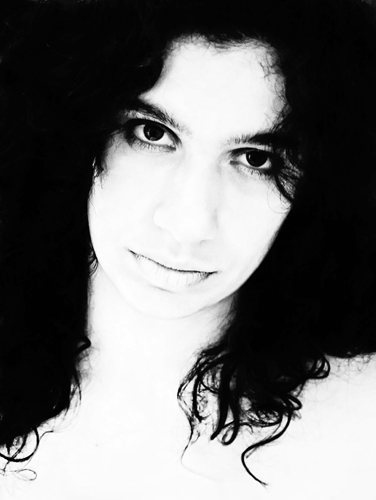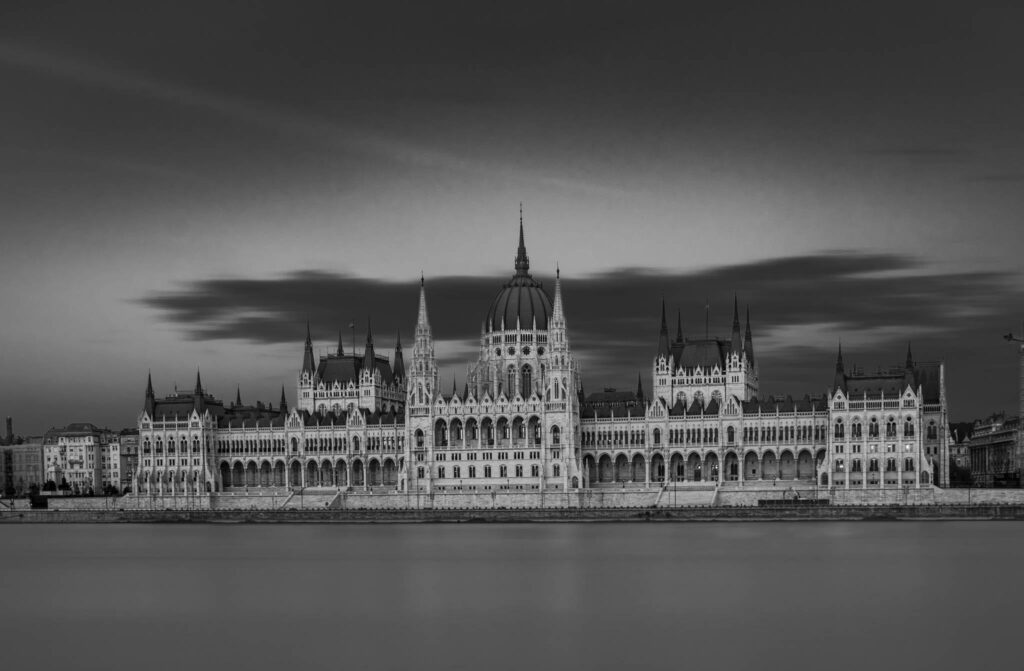Has this question ever crossed your mind? I wonder if I should shoot this in black & white? We think every photographer has been faced with this decision. And many folks today, in this digital world, would just tell themselves, “I can always convert it later”. But the truth is that sometimes it will help you in your visualization of the final photograph to image it in black and white right on the spot.
Perhaps, you might want to filter the image, either optically or electronically: a red filter to darken the sky, a green filter to light foliage, a yellow to lighten a person's skin.
Another important point to consider is tonal value. The tonal value of your subject might influence how you frame it. What do we mean by tonal value? If your subject has the predominate colors green and blue, and they have the same reflective value, they will image at almost the same tonal value in black and white.
So, how do you learn to see in tones?
Back in the old days, (film), this was a trick we used to use. Find yourself a dark piece of glass. Sunglasses work fine. But they should be the very dark variety with no color tint. Close one eye and peer through the glasses with the open eye. The glasses effectively remove all color. you are now seeing the scene in tonal value (levels of light to dark).
So What Screams Black and White?
Let's examine some photographic situations and discuss why black and white is an excellent choice.
When your situation has unpleasing color balance
This photographic opportunity is extremely interesting. But, it's a factory setting. The natural color balance in this type of situation generally isn't ideal. You're probably looking at fluorescent or sodium vapor lighting. Both of which create unnatural color shifts in your image. True, you could color balance. But if you're using a flash fill it's going to throw the color temperature on your flash off. It could be done, with gels and tinkering, but it becomes complicated. What makes this scene perfect for black and white is the action. By eliminating color, it forces your eye to the repeating pattern of the hands, and this is where the true interest of the photograph lies. Then, you take in the rest of the image as a secondary part of the composition. The choice of black and white imaging takes this ordinary situation and turns it into a graphic element.
When there just isn't a whole lot of color to start with
Sometimes, we find ourselves in situations where there just isn't a lot of color around: a foggy day, an overcast day, a scene that is all white, a scene that is all black, a scene that is all one color, a scene that has excessive contrast. The image above is a perfect example of black and white creating a strong visual statement, whereas a color version would have distracted from the man. The stark contrast of black and white draws you to the man in the foreground. His face becomes the focal point. The buildings, (despite their unusual shapes), are secondary points of interest. If this had been in color, the shapes of the buildings, combined with their color values, would have competed with the man; resulting in an image without a strong focal point.
When you want to emphasize a repeating pattern
When you eliminate color, the elements of composition tend to focus more strongly on pattern, shape, and tone. If you find yourself intrigued by a subject that has the element of a repeating pattern, consider switching to black and white; especially if the color of the subject has little to do with what you are trying to say.
Emphasizing facial features
Nothing does an interesting face more justice than a finely crafted black and white image. The very nature of the medium emphasizes skin and hair texture. The eyes of your subject become orbs of tone that penetrate into your viewers. In a picture such as this, imagine that this man is wearing a red sweatshirt. Would you be inclined to study his face as deeply.
No. Consider your subject, consider what you're trying to say, and then decide if the color values add or detract from your photographic statement.
Strong graphic elements
We're sure some folks might look at this photograph and say this would be just as strong in color. But we ask you to consider this- What if the dark strips on the stairs were actually yellow as a safety measure? What if the woman were wearing bluejeans and a blue coat, and, the man was wearing green shorts and a black jacket, do you think this image would have the same impact?
No, of course not, not in the graphic sense of composition that this black and white image portrays. This image isn't about two people walking down a staircase. This image is about the lines of the stairs, the railings, and the walls, and the juxtaposition of pitch black body shapes against those elements. When you have strong graphic elements in your composition, consider neutralizing the color. Color can simply become a distraction. (This particular example has been processed with a tone; but the concept stands.)
High contrast subjects
Sometimes you encounter high contrast subjects. Perhaps you're photographing a building in midday sun, or, as in this example, the subject itself screams high contrast. The woman in this portrait sitting had jet black hair and eyes so dark they were almost pitch black. The photographer could have shot her in a normal contrast level but decided to highlight her beautiful features through the use of high contrast. High contrast situations tend to produce poor color images. The camera has trouble recording accurate, pleasing, color when the mid-tones of a subject are missing. The use of high contrast black and white turned this ordinary head shot into an artistic statement.
Let's review
Consider black and white imaging if…
- Unusual, or unbalanced, color in your light sources
- Your scene lacks visually pleasing color to begin with
- You want to emphasize repeating patterns
- You want to emphasize strong facial features
- You wish to capture strong graphic elements and make those elements the focus of your image
- You choose, or, are confronted with, a high contrast scenario and it works to your advantage creatively.
We hope you feel inspired and will now create some dynamic mind-blowing black and white photography!
And when you do, be sure to submit your images here at Lightstalking.com so that we can enjoy seeing them.











11 Comments
Great article, but it lacks a bit of the artistic view in my eyes. It offers some options when bw could be used when color is not really available or difficult. But that’s only one side.
I personally prefer bw to color 8 times out of 10. My question always is: can color add something to what I want to express? If not, why bother?
Best regards
Mattes
I have to agree with Mattes. Sometimes only B&W will do..and its more an artistic choice than anything. Color can often detract from the message you are trying to imbue and developing that art of using B&W as a main medium is undergoing a revival in some circles 🙂
Hi Mattes, Thanks for your comment. I’m a huge black and white fan myself, going all the way back to the early 70’s when I developed my first roll of film. I just wanted to say, ‘the point of this article is to use black and white imaging when conditions make it the better choice. Obviously a photographer can choose it anytime. It can be a personal preference.
Great article, Kent. Sometimes a BnW picture can be more powerful than one in color.
I like the bit about seeing through a tinted lens with one eye to see if BnW would work. Thanks for the idea!
Hi Steve-
Great comment. I believe that black and white will always be here as a medium. I’m not sure that I agree with your statement that it is only an artistic choice. In certain conditions, such as the bakery, it’s the logical choice due to awkward mixed light sources. A photographer could have created that image in color. But it would have taken more lighting equipment and post-processing finesse to pull it off.
Thanks for the comment Mike. That tinted lens trick was taught to me by my high school photography teacher. He was one of those Old Masters- shot with a 4×5 Linhof press Camera. He never printed any of his personal stuff smaller than 16×20. He really taught me how to see in black and white.
Thanks, I think this article is of great help.
Good article. So many photography tutorials are like a politicians speech, all filler and no useful content, but yours had some good advice.
Awesome advice and thank you Frank Doorhof for link as usual great stuff
Thank Kent. It was very valuable to me. I think the WB the soul of photography.
The 3 elements of a great photograph are composition, exposure and tones (focussing is a given) and that equals Black and White, so when I shoot and image I want it to stand alone as a black and white.